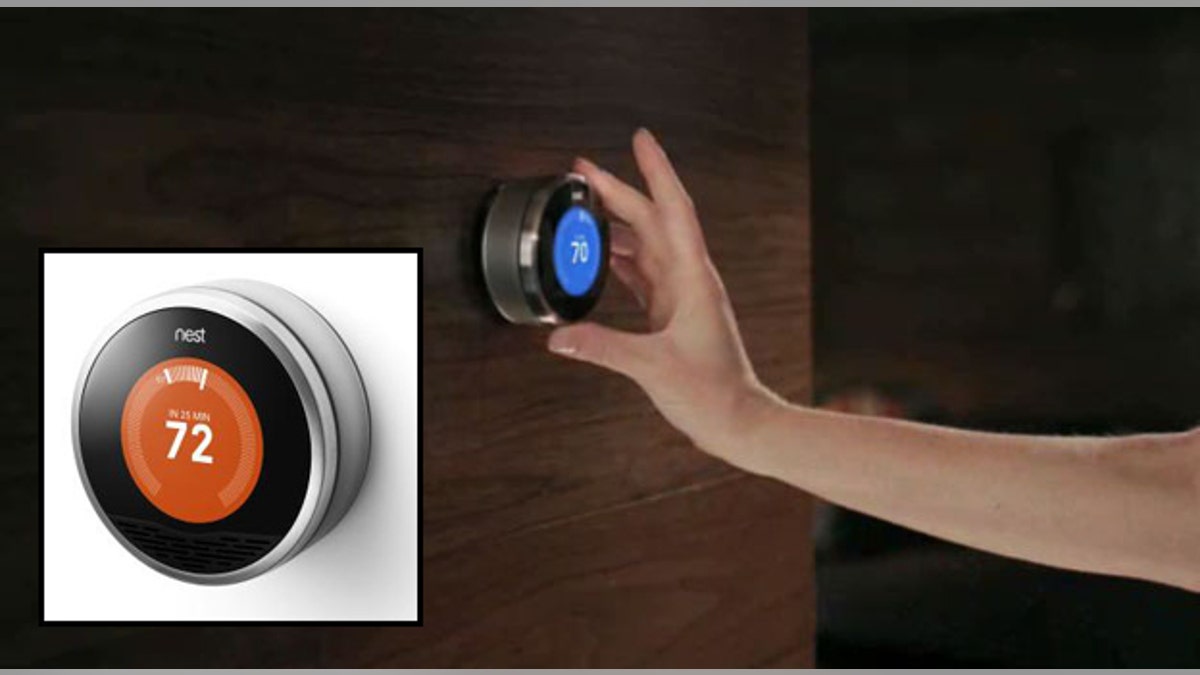
The world's first learning thermostat, created by Tony Fadell -- the man who sold Steve Jobs on the iPod -- may help lower your heating bill. (NEST Labs)
Energy-efficient upgrades around the home promise us both a more eco-friendly future and the opportunity to save big on our energy bills. But while many green upgrades do translate into real savings, some just don’t live up to the promise. Sure many of these eco-improvements are better for the environment, but that doesn’t mean they are better for your wallet.
Sometimes it’s a matter of geography — expensive energy-efficient windows make sense in chilly North Dakota, but won’t save that much in temperate San Francisco. Solar panels make sense in sunny Arizona, but not so much in endlessly overcast Seattle.
But sometimes these expensive upgrades will never pay for themselves. So before you undertake any energy-efficient changes this winter, it’s worth keeping in mind that some of these upgrades that won’t necessarily save you money.
Vampire Power Meters and Kill Switches
In recent years, people have become a lot more aware of “vampire power” — electricity used by gadgets when they are off or in standby mode. An industry has sprung up to meet the demand of consumers looking to put an end to all this lost electricity, offering things like vampire power meters and kill switches.
While vampire power can cost a typical home hundreds of dollars a year in added electricity costs, outfitting each and every outlet with a separate kill switch isn’t going to save you money. These switches can range from $5 to $20 a piece, and a lot of gadgets — your cell phone charger for instance — only add a few cents each year to the electricity bill. At that rate, it could take a couple of decades just to make back the original investment.
However, a major culprit like a big-screen television can add up to $165 a year. So if you do want to curb the flow of all this wasted electricity with kill switches, you’re better off focusing on the worst offenders, which also include computers, stereos and monitors.
Front-Load Washers
While more efficient front-load washers do use less resources and offer ecological advantages, the high price of purchasing these units — often as much as double the cost of a conventional washing machine — means you’re not likely to recoup your original investment for a very long time, if at all. And the high cost of servicing these machines means one mechanical mishap can wipe out the chance of saving any money at all.
That said, in states with high energy costs, like California and Hawaii, an energy-efficient washer is a purchase that could make sense. So before you rush out to buy the latest, great appliance, crunch the numbers to see how much you’ll really be saving.
Programmable Thermostat
When they debuted on the market, programmable thermostats promised a great new way to save money by allowing people to lower the temperature in the home when no one is around. Press a few buttons and – Presto! – the house automatically changes the temperature when you head off to work. It’s great in theory, but apparently the reality is a little different. A recent study found that the vast majority of people are so confused by the overly complicated settings on their thermostats that they never bother to program them at all. So unless you’re really disciplined about setting up a schedule, you’re not likely to see any savings.
To counter this, some thermostat makers are looking to change the way we use the devices by creating thermostats that learn your behavior or developing more user-friendly interfaces that are controlled via smartphone.
Space Heaters
Some people think they can drop the temperature in the house and then just use space heaters for the handful of rooms that they use on a regular basis. The problem is, space heaters are much less efficient than a central heating unit. Moreover, electricity can cost as much as twice the price of natural gas. So, if you’re using space heaters to warm up even just two or three rooms, you might be eliminating all of the savings.